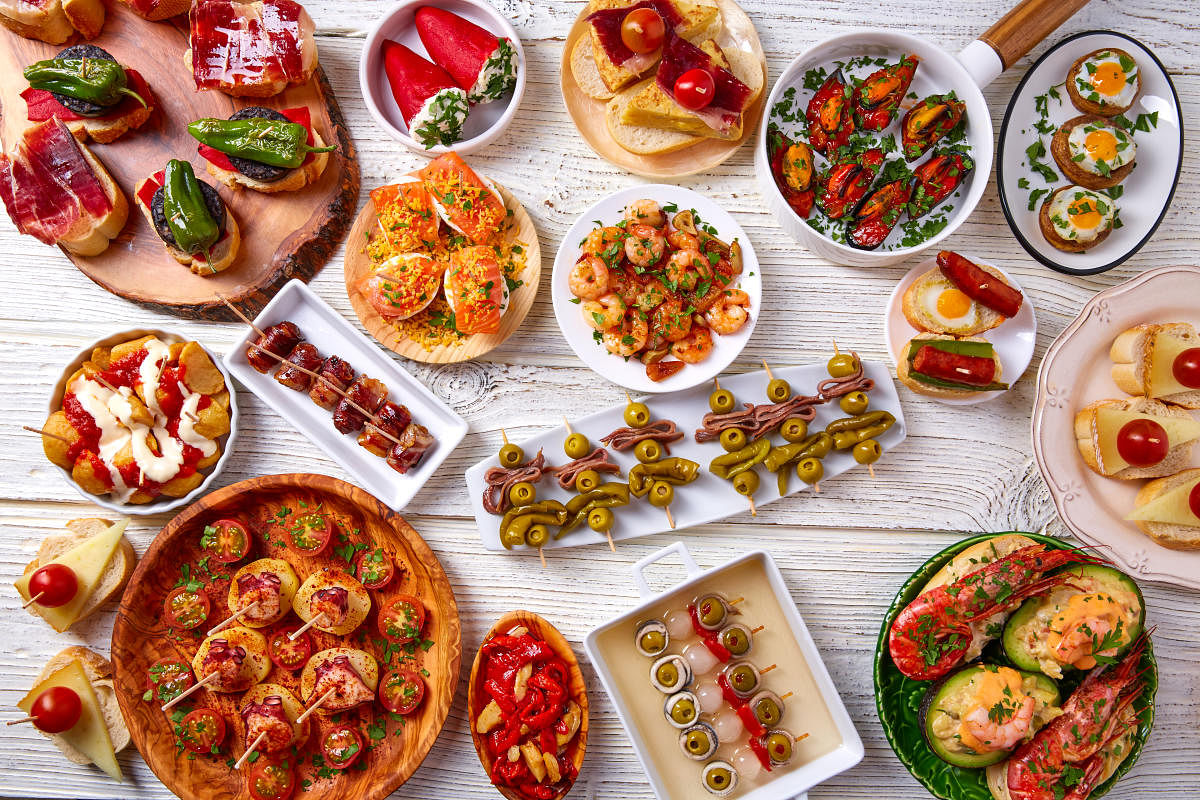Sunny side up

Let’s have a drink, a few nibbles, have a siesta, maybe work for a couple of hours and then press the repeat button. Anything remotely hedonistic at a time like this will probably sound insensitive, but when things are particularly grim, Jiminy Cricket’s advice to “give a little whistle” can’t be all that bad. The problem in our country is that the powers that be seem to be blindly devoted to Jiminy, going by the tone-deaf whistling all around, in ghastly counterpoint to the keening wail of the ambulance siren.
So back to taking your mind off grim reality: let’s imagine we are off to sunny Spain, e Viva Espana, that magnificent Mediterranean country whose hedonistic food culture we all secretly wish was our own. All those nudist beaches, that bar-hopping and tapas-eating, the casually offhand approach to work (matadors are the exception because the bull doesn’t lose every time) the 11 pm dinners, the zest they have for life, this is a culture based on a passionate approach to love, food, life and death. Insult a chef in Las Ramblas and you may have to channel your inner Usain Bolt to escape his wrath.
Spaniards eat the way they dance the flamenco, with passion and panache. They snack throughout the day and think nothing of topping it off with a large dinner. Of course, it helps that the region is abundantly blessed with gorgeous local produce from fresh fruit and veggies to the finest seafood, pork and rabbit. From the fish and crustaceans of the Mediterranean Sea to the lamb fed on lucerne and grass of the Pyrenees, Spanish food is inspired by the Moorish traditions from the Alhambra region with its distinctive grace notes of saffron, fennel and cumin and culminating in the Stephen Hawking-like imagination of molecular gastronomy as conceived by Ferran Adria. But even genius has limitations and as much as this may annoy purists, I believe that the greatest cooking in Spain is found in the Basque region of San Sebastian.
Fun fact: San Sebastian has more Michelin stars per head of population than Manhattan. Some years ago, while on a family vacation, we stayed in a modest pensione and splurged on incredible food at a dazzling array of local eateries and pintxo bars. The Basque are an ancient proud people who loathe the rest of Spain (don’t ask, it’s very complicated) but damn, do they know to cook? For those curious about Basque culture, visit the San Telmo Museum devoted to the history and traditions of the Basque people. Some of the world’s best anchovies are found in the Cantabrian Sea and the Basque who have grown up breathing the ocean, treat these tiny sea creatures with reverence. The best of the catch is brined and preserved and sold upwards of 15E for a tiny tin. Served on a little skewer with olives and pickled pepper, they are an explosion of spicy and umami flavours which will have you craving for more. The simple Spanish omelette is the best in San Sebastian, with a fluffy golden-brown exterior and a creamy centre embellished with a piece of local sausage just to make things more interesting. For the truly adventurous go to Mugaritz and try the macaroon, made with pig’s blood and almonds.
Then there’s something called “carrillada,” once considered peasant food but now sought after by the nouveau riche and wannabe famous. This is slow-cooked beef or pork cheek, cooked in a richly decadent stew which you can mop up with crusty local bread. Vegetarians can have the aubergine and potato stew, but honestly, baingan ka bharta is a better option. Grilled fish served with spinach and sliced potato is a simple classic and this is one of the few places in the world where one can taste the sea, almost as if the hake or sole has leapt straight from the ocean onto your plate, pausing to bathe in butter, parsley and lemon on the way. The local txuleta, aged grass-fed beef is a carnivore’s delight: served by the kilo, it’s seared medium rare with a charred exterior and a delicate rosy pink centre, allowed to rest for 7 minutes and then brought to your table and sliced to perfection. Roast Galician octopus is very popular if a trifle bland and rubbery, while smoked mackerel, served with beetroot and local truffle is a local favourite.
San Sebastian, or Donostia as it’s known by the locals, was a favourite of the royal family and no prizes for guessing why. The architecture is elegant, the beaches are divine and the food and drink are at a level the rest of the world can only envy but never match. The UK has Covent Garden but Donostia has Convent Garden, literally, a former nunnery converted to a rooftop bar, a basement for live music and a swanky restaurant serving delightful pintxos. The mussels in white wine are memorable, while the gambas or shrimp pil-pil in a sexy emulsion of garlic, white wine, sea salt and chilli flakes will knock your socks off.
A small relief for vegetarians is the rice with plankton and spinach, though I’m not sure about plankton…As for the Jamon Iberico, a leg of ham from the famous Pata Negra or black pigs fed on a diet of acorns, it can make a grown man weep with delight. A paper-thin slice, glistening with fat, chased down with a glass of cider and an olive is the perfect antidote to depression.
(The author is an old Bengalurean and impresario of comedy and musical shows who considers himself fortunate to have turned his passions — writing and theatre — into a profession.)